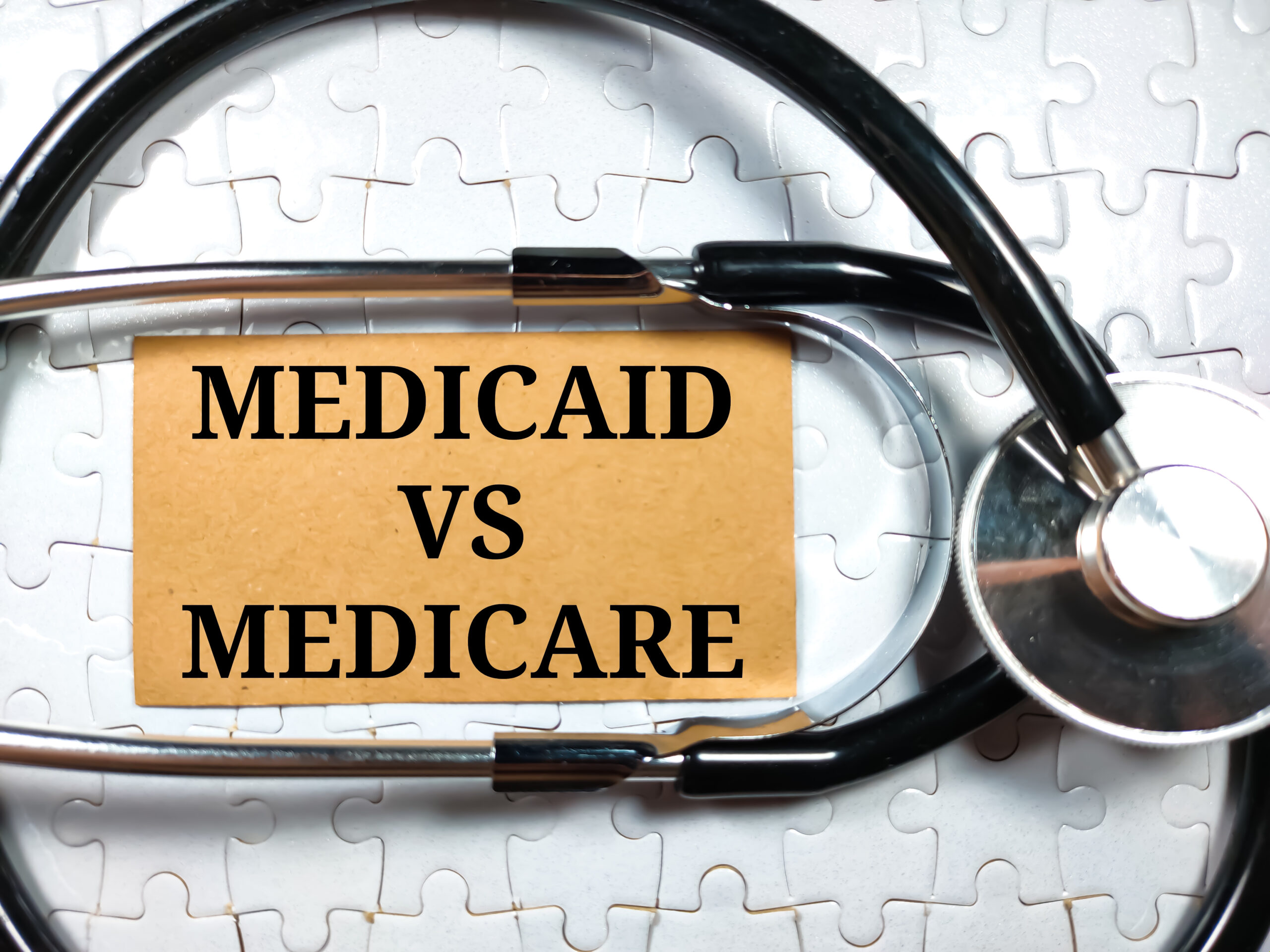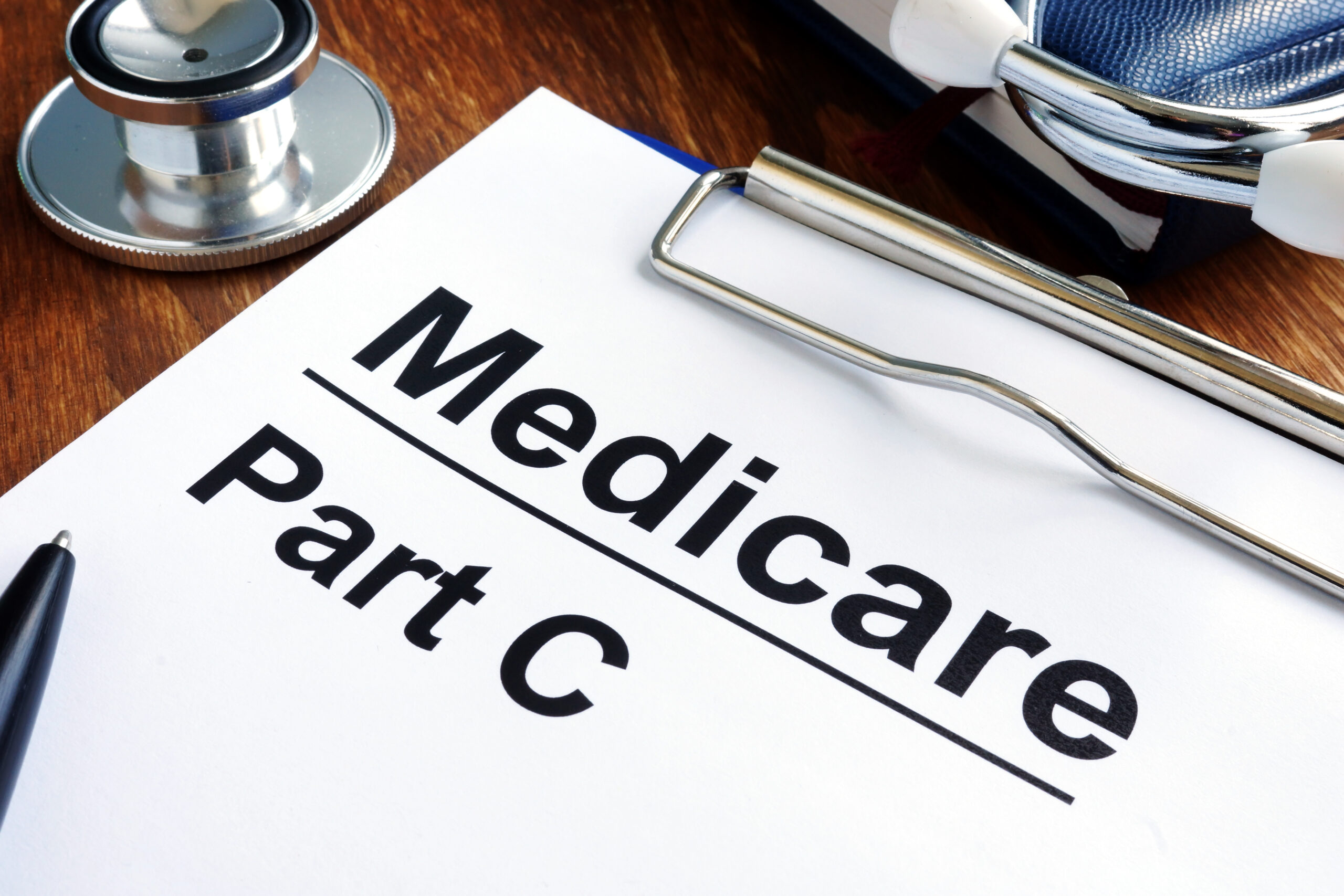Author: Olivia Coraggio
2021 Annual Enrollment Period (AEP) is approaching quickly! If you haven’t started planning, you’re already behind. Preparing for AEP is a lot of work, but if you plan well, the benefits can be substantial. Organization, strategizing and planning achievable milestones will be the key to a successful AEP.
Organize & Set Goals
Not being organized for AEP could set you up for unavoidable failure. Start planning ASAP. There are many activities insurance agents need to do throughout the year to prepare for AEP. For example, find a planner or calendar that will work for you, and mark important dates.
It will help you keep everything organized. Write down and put your goals in place. You’ll see them daily. Go over daily what hard work you’ve put in and what needs to be done – develop a plan.
Some of the important dates you should mark on your calendar: certifications open, last day to take the AHIP, and date marketing materials need to be submitted to Agent Pipeline for review (via AgentPipeline).
Marketing
Marketing is essential if you want to drum up business, but it’s also tricky within the insurance space. Without marketing yourself, there would be no leads generated for qualified beneficiaries. Without qualified beneficiaries, how will you be enrolling individuals in Medicare Supplements, MAPDs, and other Medicare health plans?
One of the easiest ways to start marketing yourself as an insurance agent, and the Medicare health plans you sell, is digital marketing (social media, blogs, websites, email marketing, etc.). Other options are print marketing, direct mail, building partnerships, among other things (via New Horizon).
Customer Outreach
AEP is NOT about new beneficiaries alone, but can also involve existing customers looking to switch their coverage. AEP is the one time a year most seniors can finally make changes to their Medicare health plan. Now is the time to help your beneficiaries make a change into a plan that meets their medical and financial needs.
So contact your existing clients, let them know about scheduling a no-cost annual review, and help them apply for optimal coverage. You can do it online in a virtual setting, or sit on their porch and conduct a review through the window.
Cross-Selling
When it comes to cross-selling to your Medicare beneficiaries, there are specific rules. Most importantly, you can’t sell a client more than one plan in one day, nor can you discuss more than one type of product without written consent.
You have to fill out a Scope of Appointment (SOA) form when you meet with a client. You can also use Agent Pipeline’s online enrollment tool and complete an online SOA that can be signed via email. If you are licensed and given permission to discuss other products with your customers, it can be an efficient way to expand your business.
Stay Calm!
AEP is the busiest time of year for insurance agents and it can be stressful. With such an important time for business right around the corner, remember to stay calm and organized in order to perform your best. You can only help one customer at a time, so try to focus on each one and their individual needs (via TripTych).
Don’t Overcommit
Having a well-thought-out schedule will keep priorities top-of-mind and prevent overcommitment. Overcommitting minimizes your effectiveness across the board. Consider the common phrase “quality over quantity” when agreeing to engagements. You want to ensure that you’re dedicating enough time to each of your clients and prospects to create a solid foundation for your relationship. Rushing from one meeting to the next will limit the information you’re able to gather (and retain). It will lower your chances of becoming their trusted advisor. Furthermore, overbooking will diminish the personal time necessary to remain healthy and productive. Overcommitment is the expressway to burnout. Do yourself a favor and commit to steering clear of overcommitment.
Update your Tools
As with all things, COVID-19 changed the way you’ll sell during AEP 2021. Virtual selling will be a major shift from your traditional selling tactics for AEP. You’ll need new or different tools than you’ve used in years passed. From e-sign software (to certify virtual agreements) to blue-light glasses (to reduce eye strain), extra tools will be necessary to maintain the same level of authenticity, personalization, and productivity. Also, you’ll need to make sure your CRM tool is active and organized (we recommend one like AgencyBloc). This allows you to keep tabs on all your customers and make sure you have a clear follow-up strategy for those who don’t convert on the first touchpoint.
Hubby Health provides all the marketing tools, strategy, capital and management to qualified agents in order to achieve a successful AEP. Contact info@hubbyhealth.com if you’re looking to expand your Medicare business.
If you have high medical expenses, you probably ask yourself “how can I reduce my monthly Medicare premiums?” or “how do I save on healthcare?”
You’re not alone. Healthcare in the U.S. can cost thousands of dollars for remedial care, even with insurance. In 2020, the average national cost for health insurance is $456 for an individual and $1,152 for a family per month. However, costs vary among the wide selection of health plans. Understanding the relationship between health coverage and cost can help you choose the right health insurance for you (via eHealth).
The good news is that the U.S. government accounts for these expenses by subsidizing programs to vulnerable populations, like Medicare for seniors and those with disabilities. If you or a loved one is over 65, has been receiving disability benefits from Social Security Administration or has End Stage Renal Disease, you could qualify for Medicare (via HHS.gov). If you are not currently enrolled in Medicare, read our article about when to sign up.
These programs contribute tremendously to cost savings on healthcare. Here is a quick glance of average monthly premiums for Medicare beneficiaries:
| Part A premium | Most people don’t pay a monthly premium for Part A (sometimes called “premium-free Part A“). If you buy Part A, you’ll pay up to $471 each month in 2021. If you paid Medicare taxes for less than 30 quarters, the standard Part A premium is $471. If you paid Medicare taxes for 30-39 quarters, the standard Part A premium is $259.
|
| Part A hospital inpatient deductible and coinsurance |
|
| Part B premium |
The standard Part B premium amount is $148.50 (or higher depending on your income).
|
| Part B deductible and coinsurance |
$203. After your deductible is met, you typically pay 20% of the Medicare-Approved Amount for most doctor services (including most doctor services while you’re a hospital inpatient), outpatient therapy, and durable medical equipment (dme)
|
| Part C premium |
The Part C monthly premium varies by plan. Compare costs for specific Part C plans.
|
| Part D premium |
The Part D monthly premium varies by plan (higher-income consumers may pay more). Compare costs for specific Part D plans.
|
(via Medicare.gov)
However, the savings don’t stop here! There are also privately-held insurance plans designed to complement or replace Medicare that can provide much better savings alternatives. Medicare Advantage plans (otherwise known as Part C) and Medicare Supplement plans are two options for further decreasing healthcare costs, and adding benefits to your coverage.
Depending on your medical needs, Medicare supplement plans can save anywhere from hundreds to thousands of dollars per year. They will cover a wide variety of costs like:
- An additional 365 days of hospital expenses, potentially worth up to $4,000 a day
- Care from a Skilled Nursing Facility, where you could pay an additional $14,080
- The first three pints of blood, about $150 each
- Copays and deductibles associated with every doctor visit
Medicare supplement plans can cover 100% of these costs and many others.
Medicare Advantage plans cover everything offered by Medicare Part A and Part B, along with added benefits such as dental, vision and hearing. On average, the monthly premiums for Medicare Advantage in 2021 are $148.50 for Medicare Part B and $25 for an Advantage plan. However, some Advantage plan premiums cost nothing, while others cost considerably more than the average. A person can choose from low, medium, or high premium plans, depending on their preferred coverage (via Medical News Today).
Speak with a representative at Hubby Health to discuss how you can save on your healthcare expenses.
In Medicare news, let’s start from the beginning. The original 1965 bill signed that created Medicare and Medicaid included two parts to the Medicare program: Part A (Hospital Insurance) and Part B (Medical Insurance). Since then, Congress has made Medicare and Medicaid changes to open eligibility to more people. For example, Medicare was expanded in 1972 to cover the disabled, people over 65, and others. Medicare includes more benefits today, including limitless home health visits and quality standards for Medicare-approved nursing homes. Medicaid has also been expanded to cover a larger group than initially intended. This includes coverage for low-income families, pregnant women, people requiring long-term care, and people with disabilities.
Wide variations in Medicaid programs across the nation occur because individual states have the ability to tailor Medicaid programs to serve the needs of their residents. In 2010, the Affordable Care Act introduced the Health Insurance Marketplace, which has had a direct impact on Medicaid service. Potential consumers can now use the Marketplace website to determine their Medicaid eligibility.
The Future of Medicare and Medicaid
As the baby boomer generation approaches retirement, thus qualifying for Medicare, healthcare spending by federal, state, and local governments is projected to increase. Assuming the government continues to subsidize Marketplace premiums for lower-income populations, this increased government healthcare spending will greatly affect the entire healthcare system in the U.S. Although Medicaid spending growth decelerated in 2016 due to reduced enrollment, spending is expected to accelerate at an average rate of 7.1 percent per year in 2018 and 2019 due to the aging baby boomer generation.
A Shift in Healthcare Providers
Along with policy and technological changes, the people who provide healthcare are also changing. Providers are an important part of the healthcare system and any changes to their education, satisfaction or demographics are likely to affect how patients receive care.
Future healthcare providers are also more likely to focus their education on business than ever before. A large-scale analysis of Harvard Business School’s physician graduates indicates substantial growth in the number of physicians pursuing M.B.A. degrees in the last decade. This growth may result in more private practices and healthcare administrators.
(via GWU.edu)
National News
Biden Administration restores rights for transgender patients
(via The New York Times)
President Biden has announced that healthcare providers who receive federal funding are prohibited from discriminating based on sexual orientation and gender identity. The announcement comes after President Biden pledged commitment to the Equality Act, which expands civil rights to the lesbian, gay, bisexual, transgender, and queer (LGBTQ) community. President Biden’s secretary of Health and Human Services (HHS), Xavier Becerra, says, “Fear of discrimination can lead individuals to forgo care, which can have serious negative health consequences. It is the position of the Department of Health and Human Services that everyone — including LGBTQ people — should be able to access health care, free from discrimination or interference, period.”
This new policy is the first step in reversing the Trump-era HHS policy that said antidiscrimination provisions of the Affordable Care Act do not apply to transgender people. The new interpretation does not fully reverse the former administration’s interpretation but invites people who may have experienced discrimination to file complaints with the federal government. Further plans include more robust civil rights provisions under Section 1557 of the Affordable Care Act, such as specifying the types of institutions and services that are subject to the provisions.
The move is not without critics. Roger Severino, leader of HHS’s Office for Civil Rights under the Trump Administration, says, “Many people of good will who are scientists and doctors believe sex is a biological reality. This action is attempting to impose a contrary view.”
The Biden announcement conflicts with recent state legislative activity, increasing controversy around the medical treatment of transgender adolescents. More than ten states are considering or have already passed bills that prohibit medical providers from offering certain medications, hormones, or surgeries to transgender teens. Medical providers in these states risk criminal penalties if they treat transgender youth, but they risk federal discrimination penalties if they do not.
A New President Signals a New Focus for Federal Health Policy
(via AHLA.org)
A new president always brings new policy priorities and objectives, particularly when that president is from a different political party than his predecessor. As we begin 2021, and usher in the Biden era, we should likewise expect a significant shift in the health policy agenda. Following are the top priorities to watch.
COVID Response. In his campaign, Biden focused on the federal response to COVID-19 more than any other issue, so we should expect this to be his number one focus as he assumes office and the virus continues to infect both the population and the economy. In addition to a federal centralization of the response commanded from within the White House, the new administration also will be pushing for more stimulus and relief, including support for health care providers. Notwithstanding the large stimulus and relief bill approved just before the New Year, health care providers will be seeking, among other things, more financial support through the Provider Relief Fund and flexibility and maybe forgiveness from debt obligations associated with the Accelerated and Advance Payment Program, as well as liability protections.
Coverage Expansion. President-elect Biden’s hope of expanding coverage to more Americans by offering a public option alternative to commercial health insurance in the exchange marketplaces is likely to run into opposition from Senate Republicans, as well as moderate Democrats. Instead, the new President will likely seek to expand access to health insurance by undoing a number of Affordable Care Act (ACA)-related administrative actions advanced by the Trump administration, reinvigorating enrollment promotional activity, and enticing states to expand Medicaid, perhaps through new flexibilities and federal cost sharing.
Congress may yet have to deal with the ACA, if the Supreme Court strikes down or severely weakens the law when it rules on California v. Texas, the case challenging the constitutionality of the individual mandate. There are relatively easy paths for Congress to avoid a wholesale undoing of the ACA, but there will have to be the political will to forge bipartisan compromise.
Prescription Drug Pricing. While not a major campaign priority for Biden, he likely will seek to find compromise with Congress as a means for reducing health care costs for individuals. There are a number of policy proposals that enjoy bipartisan support and could advance in this divided government environment, including capping out-of-pocket costs for seniors, capping price increases or rebates for increases greater than inflation, and possibly some use of international pricing indices.
Surprise Billing. Congress approved surprise billing legislation late in the 2020 lame duck session, but this legislation now needs to be implemented. Health care providers and payers may seek further revisions and delays as implementing regulations are developed. Additionally, Congress may scrutinize the role of private equity investment in health care interests. Champions of surprise billing legislation have blamed profit motives by private equity investors as a major driver for the out-of-network dynamics that cause surprise medical bills, and cast aspersions on private equity investors in the process. Health care interests with private equity investment may find themselves on the wrong end of a bad public relations narrative as a result.
Value-Based Care. Value-based care has been a rare area of bipartisan agreement, and so expect the move to value-based care to continue regardless of the change in party control at the Centers for Medicare & Medicaid Services (CMS). What might change is the tone and details of the models. The Trump administration supported pre-paid and capitated models, like the Direct Contracting Model, which required participating entities to take some amount of capitated payment for services. The Obama administration previously offered increasingly advanced forms of payment as options, but not requirements. The Biden administration likely will revert closer to an Obama-era approach, favoring flexibility and inducements for providers to begin the journey to risk and capitation.
Medicare Solvency. The 2020 Annual Report on the Medicare Trust Fund projected that the Medicare program would become insolvent in 2026. This estimate was based on data gathered prior to the pandemic. Since the report was released, more than 36 million people have lost their jobs, and the federal government has lost significant tax contributions to the Trust Fund. At the same time, significant dollars are being spent on COVID-19 care in both direct medical expenditures and additional financial relief for providers. Trust Fund solvency likely will become a major concern for both parties, but action may be postponed until after the public health emergency (PHE). A focus on Trust Fund solvency typically leads to expenditure reduction measures, which often mean slower payment growth and lower reimbursements for providers.
Telehealth Flexibilities. During the COVID-19 pandemic, the administration implemented waivers that allowed the delivery system to flex to meet the needs of the pandemic. While many of these flexibilities are likely to be extended temporarily, many stakeholders are seeking more enduring extensions. The genie may be out of the bottle on this one. Expect Congress to enact a series of short-term extensions while it gathers data to address concerns about quality, effectiveness, cost, and fraud.
Fraud and Abuse Trends to Watch in 2021
(via AHLA.org)
Stark and Anti-Kickback Reform. CMS and the Department of Health and Human Services (HHS) Office of Inspector General (OIG) in November 2020 finalized eagerly awaited changes to the Stark Law and Anti-Kickback Statute regulations, which were proposed in October of 2019. The final rules represent a significant overhaul of the Stark Law and Anti-Kickback Statute regulations. Notably, CMS and OIG have adopted new exceptions and safe harbors intended to accelerate health care’s transition to value-based reimbursement and coordinated care. The Stark final rule also clarifies key requirements for compliance, notably Stark’s “Big 3” standards of fair market value, commercial reasonableness, and the prohibition on “taking into account” the volume or value of a physician’s referrals. Many of the interpretations and positions in the final rules likely will impact future enforcement trends and ongoing False Claims Act whistleblower actions.
Watch for the End of the COVID-19 Flexibilities. Health care leaders have had to navigate a changing fraud and abuse regulatory environment due to COVID-19, but many of these changes are temporary. For example, on March 30, 2020, CMS issued blanket waivers of several Stark Law requirements related to COVID-19 physician arrangements. Soon after, on April 3, 2020, OIG also issued guidance stating that it would not impose administrative sanctions under the Anti-Kickback Statute for certain arrangements covered by the Stark blanket waivers. The waivers have provided needed flexibility to hospitals and health systems as they tackled challenging physician contracting, compensation, and staffing issues during the pandemic. Finally, CMS issued a number of Section 1135 waivers to provide relief from a variety of reimbursement and other regulatory requirements.
During the PHE, providers have entered into arrangements and set up care delivery systems that depend on these flexibilities. Some of these changes have specific conditions. For example, providers that intend to rely on the Stark Law waivers must do so for one of the six identified proper COVID-19 purposes. The waiver guidance also provides 18 distinct waivers and more than 20 examples of specific arrangements that could fall within the scope of one of the waivers. Providers should maintain separate documentation supporting their proper purpose and good faith reliance on the waivers. Providers are reminded that the waivers are only temporary and can be relied upon until the end of the declared PHE. While the pandemic does not appear to be ending soon, hopefully during 2021 it will. At this point, changes may need to be made to arrangements and activities that depend on these actions.
New Enforcement Efforts and Targets. The health care industry should expect COVID-19 to become a significant part of the government’s fraud enforcement efforts into 2021 and beyond. The main reason for this shift is the tremendous amount of new federal spending to address the pandemic, including the Provider Relief Fund program in the Coronavirus Aid, Relief, and Economic Security (CARES) Act and the Paycheck Protection Program and Health Care Enhancement Act. As many funding recipients know, the HHS, through the Health Resources and Services Administration (HRSA) has issued, and continues to change, a growing body of sub-regulatory guidance in the form of “frequently asked questions” and position statements on many facets of the program, such as the permitted uses for the funds. In addition, HRSA has created reporting obligations for any recipient who has received more than $10,000 from the program, with the first report due February 15, 2021. HHS has said many times that it expects to engage in significant audit activity of funding recipients, and we should also expect scrutiny from the Department of Justice (DOJ) and whistleblowers as time goes on.
Another reason for expecting a COVID-19 shift in fraud enforcement activity is the expansion of telehealth and the other ways in which HHS waived many federal health program requirements to allow greater flexibility in addressing the pandemic. When the dust settles, actions taken under loosened restrictions will likely come under increased scrutiny. We already have started to see an increase in telehealth enforcement in 2020. Notably, telehealth was the focus of the record-setting Health Care Strike Force Taskforce takedown that was linked to $4.5 billion in allegedly false and fraudulent claims. This takedown also involved other high priority areas, including opioids, durable medical equipment, and genetic and other diagnostic testing. The government’s likely continued focus on telehealth, combined with the ongoing expansion of coverage for telehealth services, provides an important opportunity for organizations to evaluate their telehealth service offerings and arrangements and to further enhance their related compliance activities in this evolving area.
Events
39th Annual Conference on LGBTQ Health
Health Professionals Advancing LGBTQ Equality (previously known as the Gay & Lesbian Medical Association, or GLMA) will host its 39th annual conference virtually on September 22–25. The conference theme, Closing the Gaps, focuses on strategies to reduce and eliminate LGBTQ health inequities through expanding access to care and developing leadership of LGBTQ community members and professionals who belong to multiple minority groups. Register for the conference
Call for Abstracts
The Society for Public Health Education (SOPHE) is accepting proposals for virtual oral presentations or skill-building workshops for their 23rd virtual Annual Advocacy Summit, Health Education: Advancing Health Equity at Every Level. The Summit will take place on October 13–14. Abstracts must be submitted by June 25. Learn More
2021 Public Health Law Conference Registration Open
The 2021 Public Health Law Conference is scheduled to be held in Baltimore on September 21– 23. The conference, hosted by the Network for Public Health Law, will provide an opportunity to learn how the strategic use of legal and policy tools can address fundamental drivers of inequity, promote health and well-being, and save lives. (Current cancellation policy allows for a full refund if pandemic conditions do not improve by fall.) Learn more and register
Public Health Law Academy Certificate
CDC and ChangeLab Solutions created the Public Health Law Academy to bridge the learning gap between formal public health and legal training and practice. The Academy now offers a certificate track for its free on-demand trainings. To earn the certificate, you must complete seven trainings in core competencies that all public health practitioners need. Get started
There are plenty of resources online that cater to an older demographic, ranging from entertainment to education. In this list, we’ve compiled all the top websites that support and adhere to the interests of a mature audience (via Top10).
______________________________________________________________________________________
AARP:
Aarp.org is crammed with useful senior articles, videos and senior discounts. There is probably no other site as comprehensive. Even if you aren’t looking for anything specific, just browse the headlines and you’ll find something that catches your eye. AARP also has a publication (AARP The Magazine) and is a major carrier for Medicare Supplement and Medicare Advantage plans. Read more about top magazine for seniors.
Hundreds of articles for the retired on topics like activities, finances, health, relationships and work.
Interviews with experts; fashion and beauty; arts and crafts for seniors — you’ll find a little bit of everything here.
A great site that focuses on assisted living facilities across the nation. This site also has some great content for those who may be interested in opening up an assisted living or senior living home.
Suddenly Senior provides a fun and interactive site with articles, trivia, jokes, retirement and more.
Nearly 20% of Americans ages 50-64 and almost 15% of Americans 65+ report using online dating sites! But not every site has reliable filters, so you may find your inbox flooded with messages from people you don’t relate to. Fortunately, SeniorMatch is a dating site exclusively for users 50 and older.
Open to anyone over 50, Seniors Only Club lets you make friends by finding people who share your interests and views without the pressure of an instant response. The site is divided into separate categories, such as “Hot Topic” and “Hobbies & Craft”, which makes it a lot easier for you to find the subject you’re interested in.
Grandfolk is an online directory of unbiased reviews on services like financial advisors, insurance companies, home security, and more. Its detailed content is aimed to help you make the most informed decision possible and avoid scammers.
Technology is constantly changing and it can be hard to keep up with all the new gadgets and software. Luckily, you don’t have to fall behind with your tech knowledge, even if you didn’t grow up with a computer in your house. Seniors Guide to Computers explains device management and internet use in the most down-to-earth language that’ll show you technology isn’t as complicated as it seems.
Birding or Beethoven? Film festivals or photography?
Whatever you’re interested in, Road Scholar has the learning adventure for you.
If you’re over 50 and like to travel, check out what the Evergreen Club offers: a network of low-priced B&Bs, guest rooms, and other down-to-earth, personal accommodations.
Use your next vacation to make a difference in the world!
They specialize in exotic destination travel including wildlife safaris in Africa, hiking trips in the Rockies, and cultural trips to Asia.
SeniorNet’s mission is to provide older adults education on computer technologies to enhance their lives and enable them to share their knowledge and wisdom.
If you want to know the latest tools and advice for remaining in your home for as long as possible, bookmark this site. You’ll find topics (robots for caregiving) that you never knew existed.
Has helped millions around the world learn the essential skills they need to live and work in the 21st century.
Provides tips on how to make the computer experience more enjoyable.
Web MD
Their articles on health are authoritative (often written by doctors and easy to read/understand).
Get the “basics” on a topic or click on the “in-depth” tab. You’ll also find slideshows, videos and resources for further reading.
National Institutes of Health Senior Health
An easy to use the site for senior health.
This is the official U.S government site for Medicare. Find doctors and medical facilities. Compare drug and health plans. If you’re looking for Medicare help, call Hubby to find answers.
(via FirstLantic)
For more information on top publications, or to make a suggestion, reach out to info@hubbyhealth.com.
Medicaid vs Medicare. It’s hard to think of two words that cause as much confusion.
- What’s the difference between these two government health insurance programs?
- What exactly are Medicaid and Medicare?
- Who’s eligible to get Medicaid or to get Medicare?
- And how can some people get both?
Read on to find out the answers to these questions and more.
The difference between Medicaid and Medicare.
The difference between Medicaid and Medicare is that Medicaid is managed by states and is based on income. Medicare is managed by the federal government and is mainly based on age. But there are special circumstances, like certain disabilities, that may allow younger people to get Medicare.
What is Medicaid?
Medicaid is a way to get health care at a lower cost or sometimes at no cost to you. Medicaid is managed by each state, so the eligibility requirements can change from state to state. Your state may even have its own name for its Medicaid program. It’s important to remember that you have to recertify for Medicaid each year.
Medicaid typically covers:
- Children
- Pregnant women
- Elderly adults and people with disabilities
- Eligible low-income adults
Medicaid provides health and long-term care for millions of America’s poorest and most vulnerable people, acting as a high risk pool for the private insurance market. In FY 2017, Medicaid covered over 75 million low-income Americans. As of February 2019, 37 states have adopted the Medicaid expansion. Data as of FY 2017 (when fewer states had adopted the expansion) show that 12.6 million were newly eligible in the expansion group. Children account for more than four in ten (43%) of all Medicaid enrollees, and the elderly and people with disabilities account for about one in four enrollees.
Medicaid plays an especially critical role for certain populations covering: nearly half of all births in the typical state; 83% of poor children; 48% of children with special health care needs and 45% of nonelderly adults with disabilities (such as physical disabilities, developmental disabilities such as autism, traumatic brain injury, serious mental illness, and Alzheimer’s disease); and more than six in ten nursing home residents. States can opt to provide Medicaid for children with significant disabilities in higher-income families to fill gaps in private health insurance and limit out-of-pocket financial burden. Medicaid also assists nearly 1 in 5 Medicare beneficiaries with their Medicare premiums and cost-sharing and provides many of them with benefits not covered by Medicare, especially long-term care.
Medicaid covers a broad range of services to address the diverse needs of the populations it serves. In addition to covering the services required by federal Medicaid law, many states elect to cover optional services such as prescription drugs, physical therapy, eyeglasses, and dental care. Coverage for Medicaid expansion adults contains the ACA’s ten “essential health benefits” which include preventive services and expanded mental health and substance use treatment services. Medicaid plays an important role in addressing the opioid epidemic and more broadly in connecting Medicaid beneficiaries to behavioral health services (via KFF.org).
What is Medicare?
Medicare is a national health insurance program run by the federal government. Medicare covers:
- People age 65 and older.
- Some people under age 65 who may qualify due to a disability or another special situation.
Medicare helps millions of American seniors and disabled individuals cover some of their health care costs. There are 4 different parts to Medicare. This helps give people more health care choices, so they can pick the health care plan that best meets their needs (via United Healthcare).
Part A: Hospitalization Coverage
Medicare Part A provides hospitalization coverage to individuals who are 65 years or older, regardless of income. To qualify, you or your spouse must have worked and paid Medicare taxes for at least 10 years. Most people don’t pay a premium for Part A, but deductibles and coinsurance apply.
Part B: Medical Insurance
Those eligible for Medicare Part A also qualify for Part B, which covers medically necessary services and equipment. This includes doctor’s office visits, lab work, x-rays, wheelchairs, walkers, and outpatient surgeries, as well as preventive services such as disease screenings and flu shots.
For 2021, the standard Part B premium is $148.50 (generally deducted from Social Security or Railroad Retirement payments). Deductibles and coinsurance apply. Individuals who earn more than $88,000 per year ($176,000 for a couple) are obligated to pay more for this program.
Individuals are not mandated to sign up for Part B as soon they are eligible if they are still covered by their employer’s insurance. However, it may cost more to join later in life, due to a late-enrollment penalty.
Part C: Medicare Advantage Plans
Individuals who are eligible for Medicare Part A and Part B are likewise eligible for Part C, also known as Medicare Advantage. Medicare Part C plans are offered by private companies approved by Medicare.
In addition to providing coverage offered by Parts A and B, Part C offers vision, hearing, and dental coverage, and may also provide prescription drug coverage. In that way, it functions much like the health maintenance organizations (HMOs) and preferred provider organizations (PPOs), through which many people receive medical services during their working years.
Enrolling in Part C may reduce the costs of purchasing services separately. Individuals should carefully evaluate their medical needs because Part C participants generally pay out-of-pocket for the associated services.
Medicare Supplement Insurance, known as Medigap, may be purchased to help cover expenses such as copayments, coinsurance, and deductibles that are not covered by Parts A and Part B. However, physicians who do not take Medicare also do not accept Medigap.
Part D: Prescription Drug Coverage
Medicare Part D provides prescription drug coverage. Participants pay for Part D plans out-of-pocket, and must pay monthly premiums, a yearly deductible, and copayments for certain prescriptions. Those enrolled in Medicare Part C will only want to consider Part D if their plan has no prescription drug coverage.
The annual Medicare open enrollment period runs from Oct. 15 to Dec. 7 for 2021. Check out our other article on eligibility periods for Medicare products.
Can I have Medicare and Medicaid at the same time?
As of 2018, 12.1 million people were covered under both Medicare and Medicaid (amounting to 20 percent of Medicare beneficiaries). This happens when a person has Medicare because they are elderly or disabled and also qualifies for Medicaid due to their financial situation. Dual eligibles receive fragmented care under Medicare and Medicaid – navigating two different systems in order to receive treatment. (60 percent of dual eligibles had multiple chronic conditions in 2018.) Because of this, the ACA created the Medicare-Medicaid Coordination Office (MMCO) to help align coverage under the two programs. The law also allowed insurers to offer specialized plans that include both Medicare and Medicaid benefits.
Despite efforts to align coverage, the most popular type of managed care plan for dual eligibles is actually a type of Medicare Advantage plan called a dual-eligible special needs plan (D-SNP). More than 2.5 million people are enrolled in over 550 of these plans as of 2020. If you have Medicare and Medicaid, this usually means you shouldn’t have any out-of-pocket healthcare costs. But billing issues have been common for D-SNP enrollees, because these plans often pay only Medicare’s share of your costs – with Medicaid responsible for the rest.
Previous federal legislation required D-SNPs to contract with state Medicaid programs so that enrollees’ deductibles and cost-sharing were properly billed to Medicaid. States can also require D-SNPs to pay for these things themselves and be reimbursed by the state, further reducing the likelihood of dual-eligible enrollees improperly being billed. Beginning in 2021, D-SNPs will be required to integrate care with Medicaid programs in additional ways (via MedicareResources.org).
Resources:
Website: Centers for Medicare and Medicaid Services (CMS)
CMS Number: 1-800-633-4227
CMS Address:
Office of External Affairs
7500 Security Blvd.
Baltimore, MD 21244
After a long year of cancelled summits, virtual conferences and missed networking opportunities, this next phase in marketing events is bringing a plethora of opportunities and you’ll want to join in. These industry-leading experiences serve as opportunities for brokers and agents to network, learn about the ever-changing health insurance landscape and evaluate new technology offerings (via ADSC).
June 23-25, 2021
Virtual
The Annual AHIP Institute & Expo kicks off the beginning of preparation for Open Enrollment with the roll-out of MFWA test and this annual convention. Over the course of three days, there will be keynote presentations, panel discussions and interactive sessions where attendees can ask questions and participate in virtual product demos. This year, the conference is virtual and can be attended by members and non-members alike, and is always a great way to learn the latest in Health Insurance.
National Medicare Supplement Insurance Summit
September 8-10, 2021
Chicago, IL
Lead by the American Association for Medicare Supplement Insurance, this summit will focus on everything Medigap. Attended by industry leaders who price, administer, market and sell Medicare Supplement insurance, the conference will be a great place to network and learn. This year will focus on Direct-to-Consumer, call centers, technology, sales and market trends in the Medigap industry. They even offer a free day for brokers!
SIIA National Conference & Expo
October 3-5, 2021
Austin, TX & Virtual
The world’s largest self-insurance event expects to extend its reach as industry professionals will be able to participate virtually and in-person for the first time ever. The theme is “The Way Forward” and combines a top-notch educational program, a one-stop shopping opportunity for products/services, and a variety of facilitated networking opportunities you will not find anywhere else. The keynote speaker is Mike Walsh, a leading industry expert on the future of work, digital transformation and reimagining leadership for the age of AI.
January 16 – 18, 2022
San Diego, CA
Lead Generation World (LGW) is the home for lead generators, performance marketers, and the service providers that support their efforts. LGW brings together the brightest minds in the industry and those that want to improve their lead generation campaigns from creation to close. LGW’s primary focus is to help Advertisers and Lead Buyers successfully navigate the lead generation ecosystem by providing highly targeted and insightful content alongside exclusive networking opportunities with companies that can support their efforts. This conference is especially interesting to any health insurance agency or broker because of the endless resources and connections it provides for generating leads and optimizing marketing strategy.
Medicare Sales & Marketing Summit
February 16-18, 2022
Las Vegas, NV
If you are in Medicare Advantage sales, this event is a must-attend. It covers Medicare Advantage Marketing, Sales, Product Development and customer engagement attracting over 450 leaders and senior executives in the managed care space. Gain priceless insights from the best speakers in the industry during general sessions, concurrent tracks, round-table discussions, and invaluable experience from service and solution providers to maximize your processes and operational success. Falling in the middle of AEP, this event will ensure capitalization of your current operations and execution for optimal performance.
Medicare Advantage plans, also known as Medicare Part C, offer the same benefits as Original Medicare Part A and Part B, and then some. Medicare Part C plans are held by private insurance companies and accompany the usual benefits along with vision, dental, hearing, and prescription drug coverage, none of which are covered by Original Medicare (Part A and Part B). If you opt into a Medicare Advantage plan, you will still need to pay Original Medicare premiums, which raises the price of coverage overall.
Some popular Medicare Advantage carriers are listed below:
- Medicare Advantage AARP
- Medicare Advantage Aetna
- Medicare Advantage Blue Cross
- Medicare Advantage Humana
Medicare Advantage plans (sometimes called MA plans) also require you to use a local network of providers. You cannot sign up unless you live within a certain distance of a plan’s network (via Investopedia). With Original Medicare coverage, you can go to any health care provider in the country that accepts Medicare. The Medicare program is run by the Centers for Medicare & Medicaid Services (CMS), a federal agency, but Medicare Advantage plans are run by private insurers.
For that reason, Medicare Advantage plans often look similar to traditional health insurance plans. Prices are lower than regular private insurance, but the types of costs and the structure of plans are the same.
You can purchase a Medicare Part C plan as long as you have enrolled in Original Medicare (via Medicareresources.org). You must also live in a particular Advantage plan’s network to buy it. As for timing, check out our article on when Medicare Advantage becomes available during Open Enrollment.
Medicare Advantage prices vary greatly by plan, so how much you pay really depends on your individual plan (via AARP). There are some particular costs you should pay attention to, though. In particular, let’s cover the basics of your monthly premiums, copays, annual deductible, coinsurance, and maximum out-of-pocket limit. Enrollment in Medicare Part C plans has been growing, largely because Advantage plans offer more benefits than standard Medicare plans. Medicare Advantage plans usually aren’t the best option for low-income recipients because they can often qualify for other Medicare savings programs. Medicare Advantage also isn’t generally necessary if you’re still receiving employer-sponsored coverage.
To learn more about Medicare Advantage plans, call Hubby Health.
If you are looking for the latest in senior activities, healthcare, insurance, events and lifestyle, these top publications are exactly what you need. Magazines have gone through a digital transformation in recent years, increasing their reach and accessibility to the older demographic. Many, if not all, of these magazines are available for online subscriptions allowing for easier access. If you are an old school avid reader, they’re also available in print for an affordable price sent right to your door.
Arguably the most popular magazine in insurance, AARP The Magazine offers content for any demographic but focus on topics for anyone over fifty. It includes information on everything from politics to a post-retirement, once-in-a-lifetime European vacation. It also includes spotlight articles on significant figures, their most recent being Matthew McConaughey and his mission to heal America. With over 40 million members of AARP, the magazine has an array of health and wellness columns, reviews, and topical information to keep you informed and entertained.
Reader’s Digest needs no introduction given that this magazine has reached millions of Americans for almost a century. They feature content on a wide array of topics, from humor and food to health and history. Their online publication is easy to navigate and tailors many pieces to an older demographic, like their most recent The 10 Best (and Worst) States for Retirees. They also offer a large print edition that makes the magazine easier to read.
Recently relaunched, American Heritage is the oldest, most widely known and respected popular U.S. history magazine. Central to its mission is making top-tier scholarship accessible to a wide range of audiences, proving that history can be lively, interesting, even spell-binding. For nearly 70 years, the magazine has told the American story with verve, humor, accuracy, compassion and, above all, authority. American Heritage has always been apolitical and non-partisan, but tells the story of our nation and the people who built it with respect and appreciation. For history buffs and curious readers alike, this magazine provides entertainment and education for all.
Birds & Blooms is the #1 bird and garden magazine in North America with more than 1 million subscribers. They gained popularity over the years by celebrating the “beauty in your own backyard” with a mix of expert advice and personal stories from their wide family of readers. The magazine covers an array of topics such as attracting hummingbirds, building birdhouses, gardening for butterflies, feeding birds for less, growing veggies, tales of readers’ birding experiences, plus a whole lot more. For those of you looking to pick up a new hobby in your very own backyard, this publication could be a great place to start.
Discover magazine reports captivating developments in science, medicine, technology, and the world around us. Spectacular photography and refreshingly understandable stories on complex subjects connect everyday people with the greatest ideas and minds in science. For being science-heavy, the content is digestible and entertaining for those who want to expand their knowledge in this field.
Do you prefer reading the latest golf news, exclusive interviews, or helpful tips to improve your swing? With Golf Digest, you get all three. This respected publication is the primary source for monthly ways to improve your score when out on the course and learn more about the personalities of the game’s leading players. Enjoy a deeper level of access to everything from equipment technology to the secrets of leading swing coaches. It also provides a community and connectivity around this outdoor activity for many retirees and seniors.
One of the top cooking magazines, Taste of Home Magazine ranks as one of the best magazines for senior citizens who enjoy food and cooking. Featuring more than 200 recipes in every issue, Taste of Home Magazine delivers the perfect recipe for a dish for any occasion. From small meals for 2 to large meals for extended family members, you will find easy-to-follow directions and full-color photos of every recipe to see the finished product before starting. Discover ideas for healthy options, quick meals, slow-cooked recipes, soothing classics, and more.
Now that you are retired, it’s time to travel and relax! Get inspired by Travel + Leisure Magazine as the pages transport you to the world’s best destinations. Start planning your dream vacation with Travel + Leisure’s expert reviews and news on popular locations, complete with each destination’s photographs. Discover tips on how to save money, stay safe, and find the best travel equipment. Whether you are looking to go on a trip with your grandkids or a romantic getaway, you are guaranteed to find great ideas.
This magazine delivers the best holistic health approach for seniors. As you age, it becomes more and more important to focus on your health and well-being. Stay informed about prescription medications’ side effects and learn how to prevent sicknesses and injuries before they happen. Find the best healthy recipes (that actually taste good!) and exercises that work for your age! Each issue also includes tips on managing stress levels, improving your mental acuity, and learning how to recognize cancers.
To read more blog posts by Hubby Health, visit HubbyHealth.com/blog
The medicare enrollment period can be confusing because there are multiple opportunities that provide the chance to apply. The Initial Enrollment Period is a 7-month period that starts 3 months before you turn 65 and ends 3 months after the month you turn 65 (via The Balance). If you join during the 3 months before you turn 65, then coverage begins the first day of your birth month (via AARP). If you enroll during or after the month you turn 65, coverage will begin the first day of the month after you ask to join the plan. During this time, most individuals will be automatically enrolled in premium-free Medicare Part A, with the exception of anyone still working and not receiving Social Security or Railroad Retirement Benefits.
You can enroll anytime in Medicare Part A or Part B during the Initial Enrollment Period and coverage will extend retroactively 6 months from when you sign up, but no earlier than the first month you’re eligible for Medicare (via Medicare.gov).
If you wait to enroll until after you turn 65, it could cause delays in your Part B coverage.
If you miss your Initial Enrollment Period, do not fret! Open Enrollment 2021 will provide the opportunity to sign up for Medicare Part A and Medicare Part B from October 15 – December 7. Medicare open enrollment is the annual period from October 15 to December 7 when people who have Medicare can change their health insurance plan. Specifically, you can apply for or make changes to your Medicare Part C (Medicare Advantage) and Medicare Part D prescription drug plans. All plan changes go into effect on January 1 (not right when you make changes) and last for the year (via Policygenius.com). This period allows you to:
- Switch from Original Medicare (Part A and Part B) to Medicare Advantage (Medicare Part C)
- Switch from a Medicare Advantage plan to Original Medicare
- Switch from one Medicare Advantage plan to another
- Enroll in a Medicare Part D (prescription drug) plan
- Switch from one Medicare prescription drug plan to another
To avoid paying the extra enrollment fees, you might qualify for a Special Enrollment Period if:
- You or your spouse (or family member if you’re disabled) is working.
- You’re covered by a group health plan through the employer or union based on that work.
You have 8 months to sign up for Part A and/or Part B starting:
- The month after the employment ends
- The month after group health plan insurance based on current employment ends
January 1 to March 31 is also the Annual Election Period for Medicare Advantage, which provides similar coverage as Original Medicare with added benefits like Dental, Vision, Hospice, and general wellness (via Kaiser Permanente). See our blog post or call Hubby Health to learn more about the different Medicare products and how you can save on your health costs.
To find out whether you are eligible for Medicare products, read our article on eligibility or call Hubby Health to learn more.
Resources to Learn More:
Medicare Phone Number 1-800-633-4227
Hubby Heath 8-333-MEDSUP
AHIP, which stands for America’s Health Insurance Plans, was formed in 2013 and consists of 1,300 private companies providing health care coverage, services and solutions to millions of Americans. Through the expertise of thousands of industry professionals, they advocate for advancing health equity, supporting private insurance, Medicare Advantage advocating employer-based health coverage and promoting Medicare Advantage.
AHIP is especially relevant to the Medicare industry as the proprietor of the certification to sell Medicare Advantage plans.
Most carriers require certification to ensure compliancy with the latest CMS guidelines, which keeps seniors safe from fraud and holds agents accountable for sales.
The test is released on an annual basis, and is available June 21, 2021 for certification through 2022. Now that the test has been released, here is everything you need to know to prepare.
The test generally consists of two parts: Medicare and Fraud, Waste & Abuse. The former covers the basics of Medicare benefits and eligibility, Medicare Advantage and Part D Prescription Drug plans (via PMS Brokerage). The latter focuses on the consequences of human and financial waste, and provides information on proper reporting to avoid any risk associated with fraudulent behavior. Because Medicare Advantage plans are distributed by the U.S. government, it’s important that agents are educated on detecting and eliminating any presence of Fraud, Waste and Abuse within their book of business. If you’re interested in selling Medicare Advantage plans, find out more about passing this exam.
The test is $175, but many carriers offer discounts through their agent portals. It is a timed test with two hours to complete 50 questions, and three attempts to pass (via Excelsior). Luckily, there are training materials available for agents to help them prepare before the test is distributed.
Passing the AHIP certification is a necessary step in selling Medicare Advantage and Prescription Drug Plans, but it doesn’t need to be difficult. With proper preparation and training, agents can expand their product offerings and exponentially increase sales through Open Enrollment and beyond.










